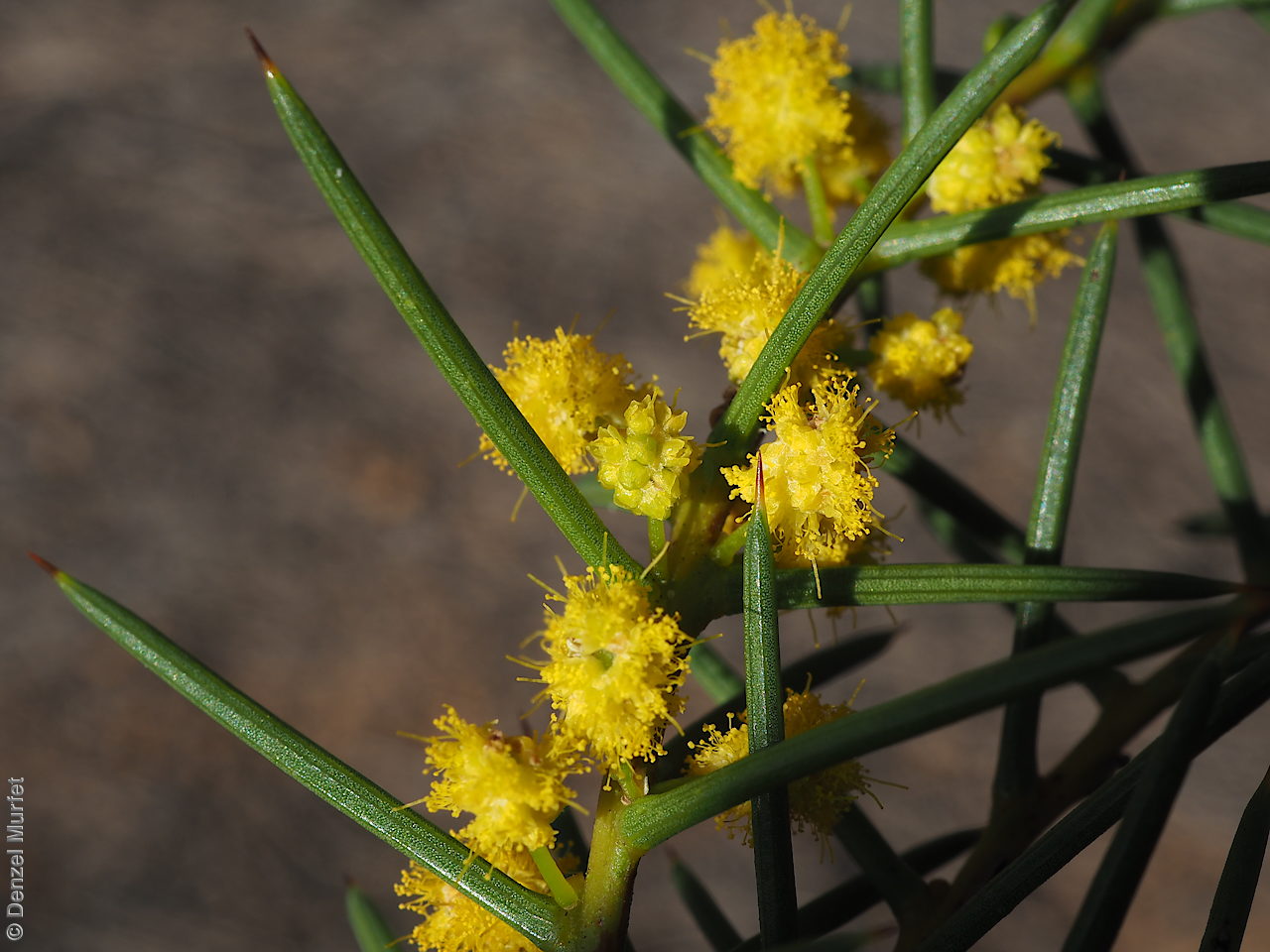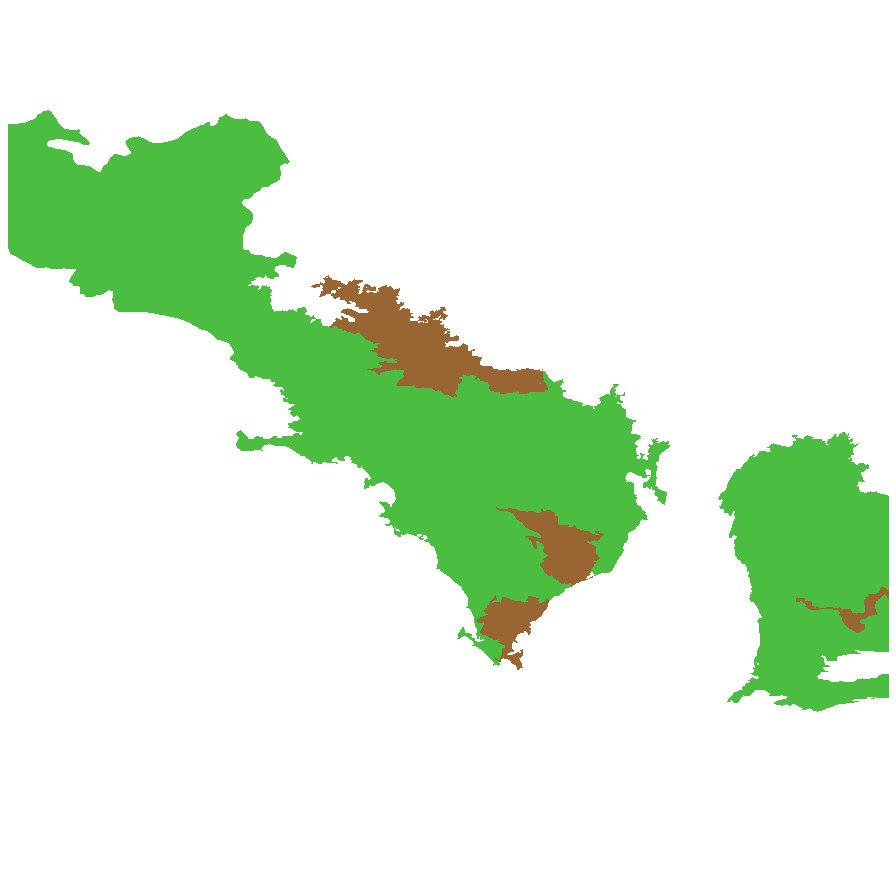














Botanical art
Common names
Veined Spine-bush
Veined Wait-a-while
Etymology
Acacia from the Greek 'akakia' and derived from 'ake' or 'akis' meaning a sharp point or thorn and 'akazo' meaning to sharpen. Dioscorides, the Greek physician and botanist used the word in the 1st century AD for the Egyptian thorn tree, Acacia arabica. Colletioides from the genus Colletia (genus named for Philibert Collet, 17th century French botanist) and Greek 'oides' meaning resemblance to, referring to its resemblance to Colletia.
Distribution and status
Found across the central part of South Australia from the North-Western to the Murray regions, associated with open scrub or low woodland. Also found in Western Australia, Northern Territory, New South Wales and Victoria. Native. Common in South Australia. Common in the other States.
Herbarium regions: North Western, Nullarbor, Gairdner-Torrens, Eastern, Eyre Peninsula, Northern Lofty, Murray
NRM regions: Adelaide and Mount Lofty Ranges, Alinytjara Wilurara, Eyre Peninsula, South Australian Arid Lands, South Australian Murray-Darling Basin
AVH map: SA distribution map (external link)
Plant description
Dense, much-branched, rigid, prickly, rounded, spreading shrubs to 4 m high, often spreading more than its height. Terete branches with grey to reddish-brown bark, slightly fissured at the base of stems. Leaves to 4 cm long and 1.5 mm diameter, terete, or almost so, very rigid, pungent, spreading to sometimes almost horizontal with approximately 8 prominent longitudinal veins. Small glands 1-2 mm above the base. Inflorescences axillary and solitary, usually twin or sometimes in clusters up to 5 small, more or less globular, yellow flower-heads. Flowering between August and October. Fruits are dark brown narrow-oblong, curved or twisted pods to 5 cm long and 5 mm wide. Margins slightly constricted between seeds. Seeds are hard, black and ovoid-ellipsoid to 4.5 mm long and 2.5 mm wide. Seed embryo type is investing.
Seed collection and propagation
Collect seeds between November and January. Collect mature pods that are turning brown, with hard, dark seeds inside. Place the pods in a tray and leave to dry for 1-2 weeks or until the pods begin to split. Then rub the dried pods to dislodge the seeds. Use a sieve to separate any unwanted material. Store the seeds with a desiccant such as dried silica beads or dry rice, in an air tight container in a cool and dry place. Seed viability is usually high but can be low due to high predation. This species has physical dormancy that needs to be overcome for the seed to germinate (e.g. nicking or softening the seed coat).
| Location | No. of seeds (weight grams) | Number of plants | Date collected | Collection number Collection location | Date stored | % Viability | Storage temperature |
|---|---|---|---|---|---|---|---|
| BGA MSB | 4,700 (50 g) 4,700 (50 g) | 40 | 6-Dec-2005 | DJD291 Eyre Peninsula | 1-Aug-2006 | 60% | -18°C |
Number of plants: This is the number of plants from which the seeds were collected.
Collection location: The Herbarium of South Australia's region name.
% Viability: Percentage of filled healthy seeds determined by a cut test or x-ray.